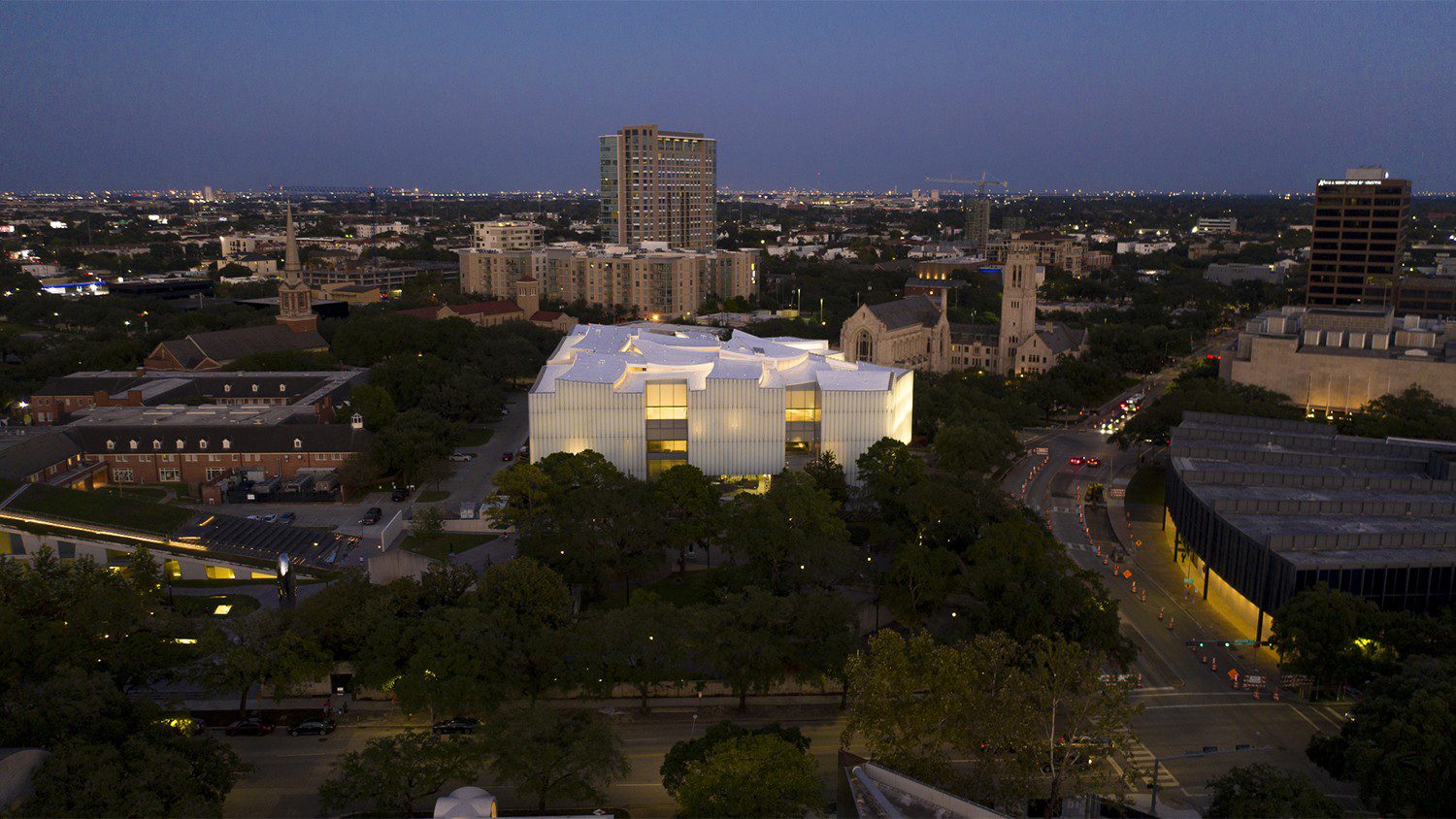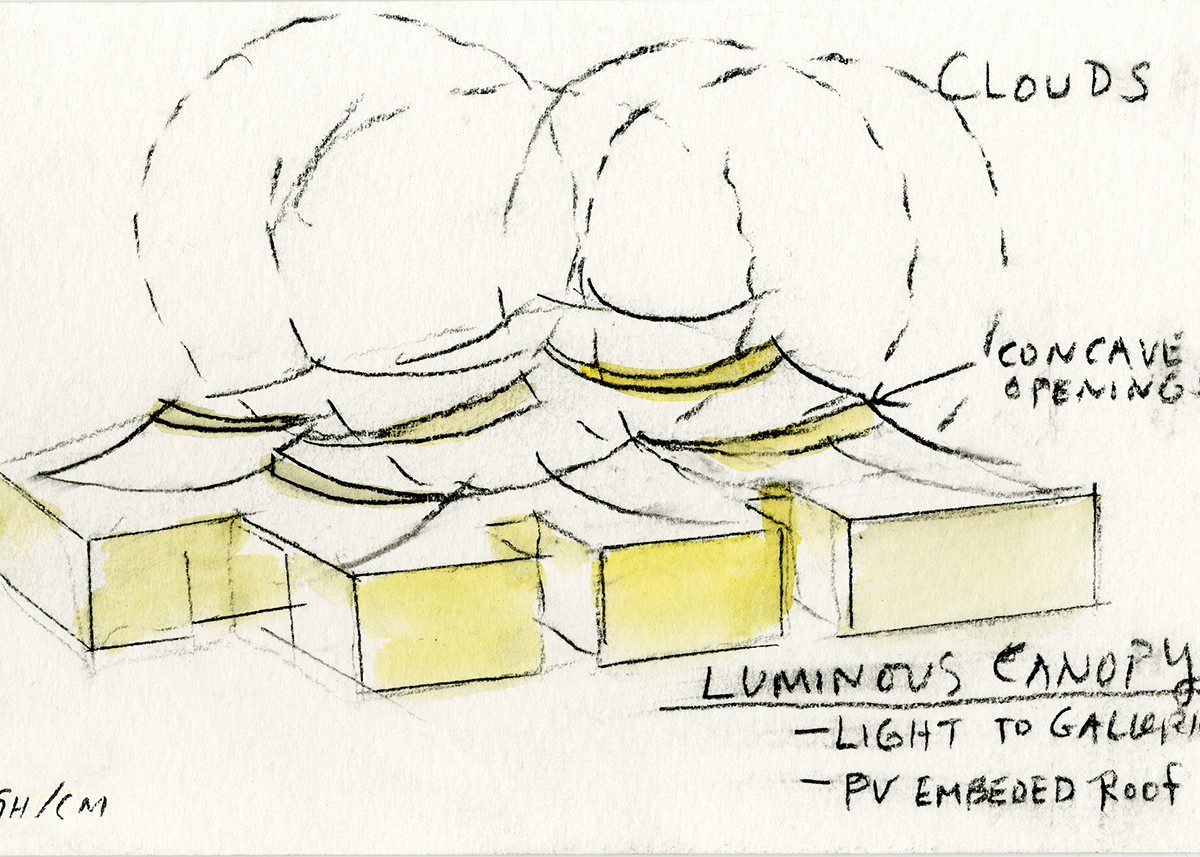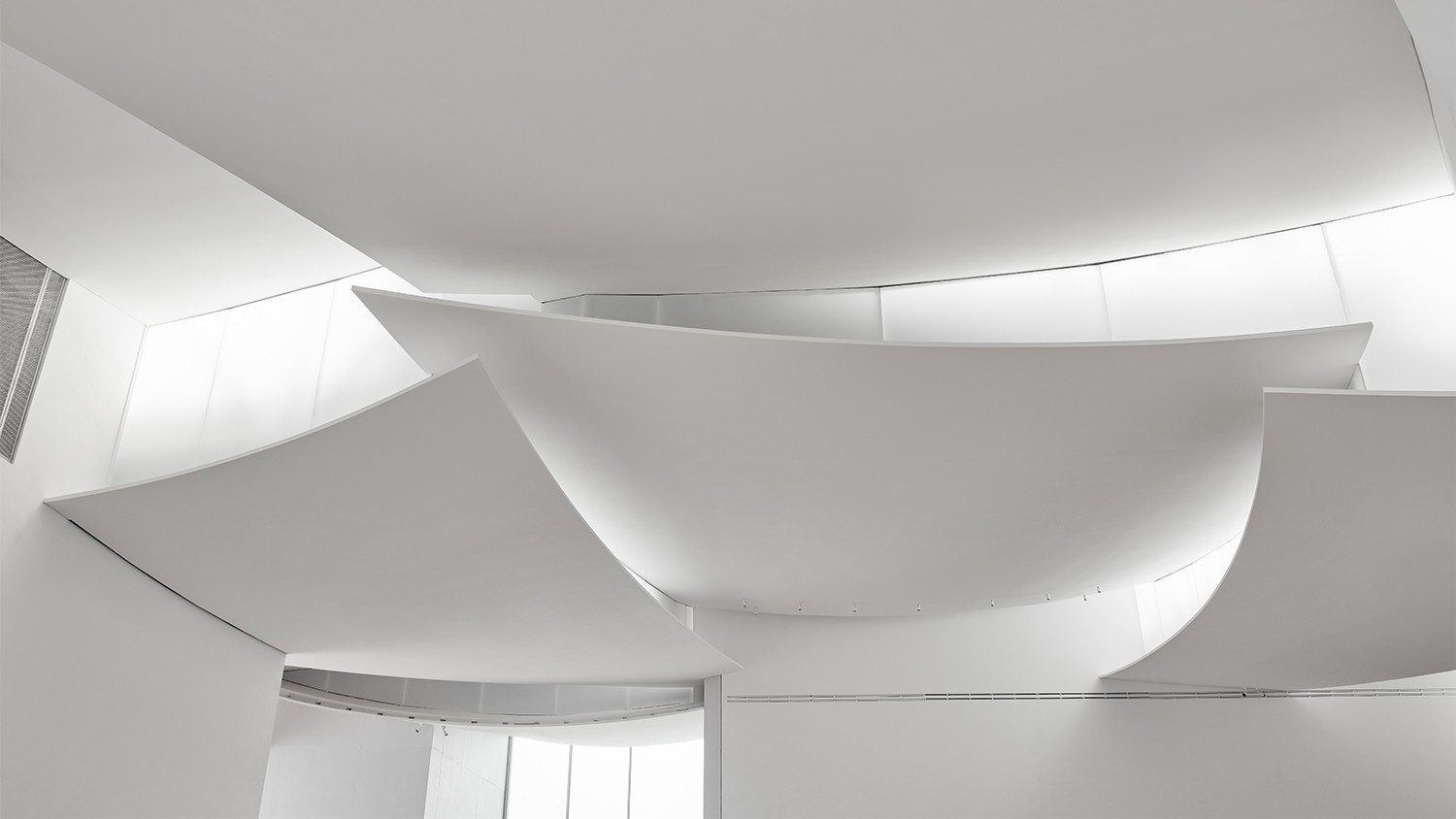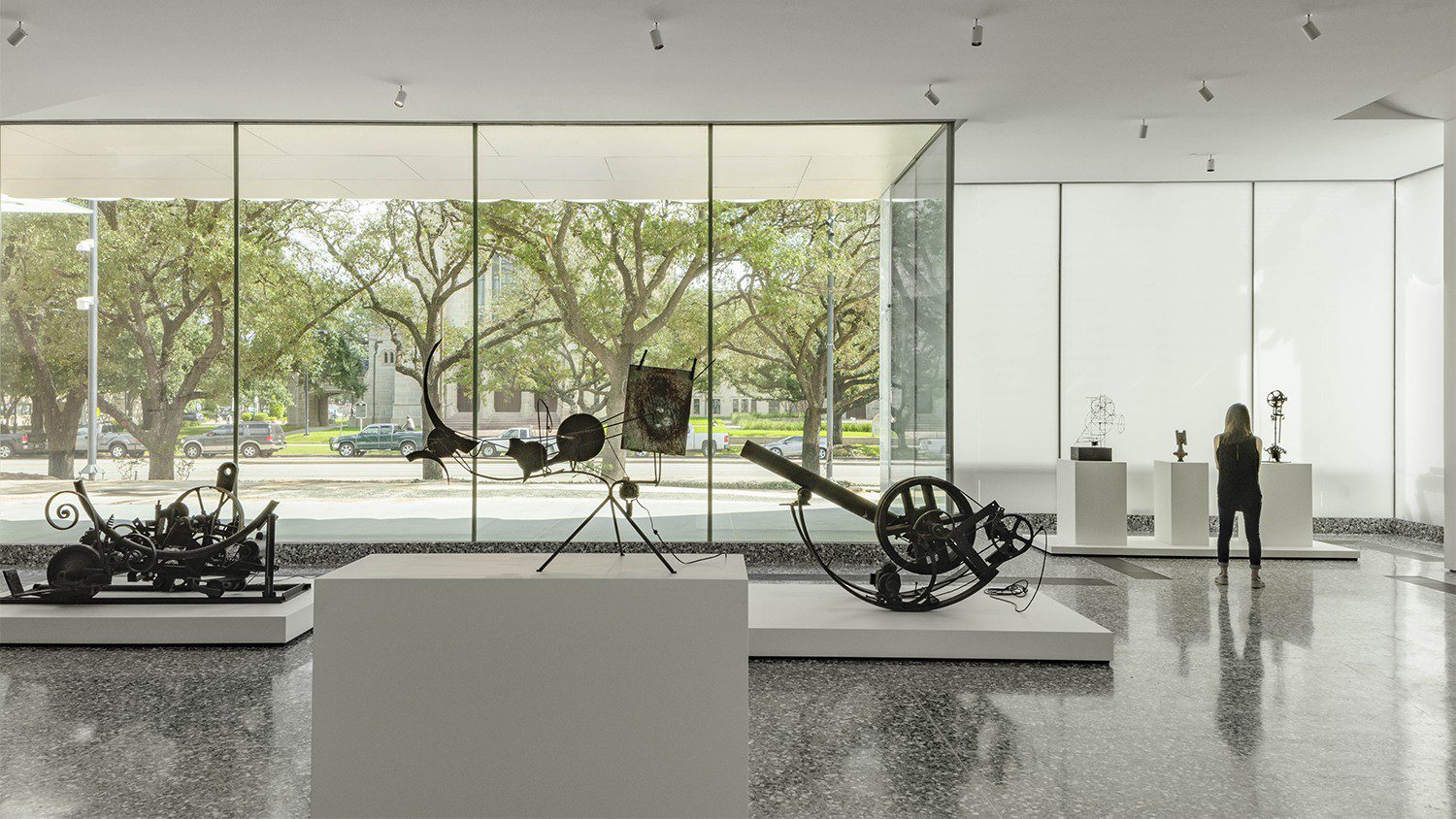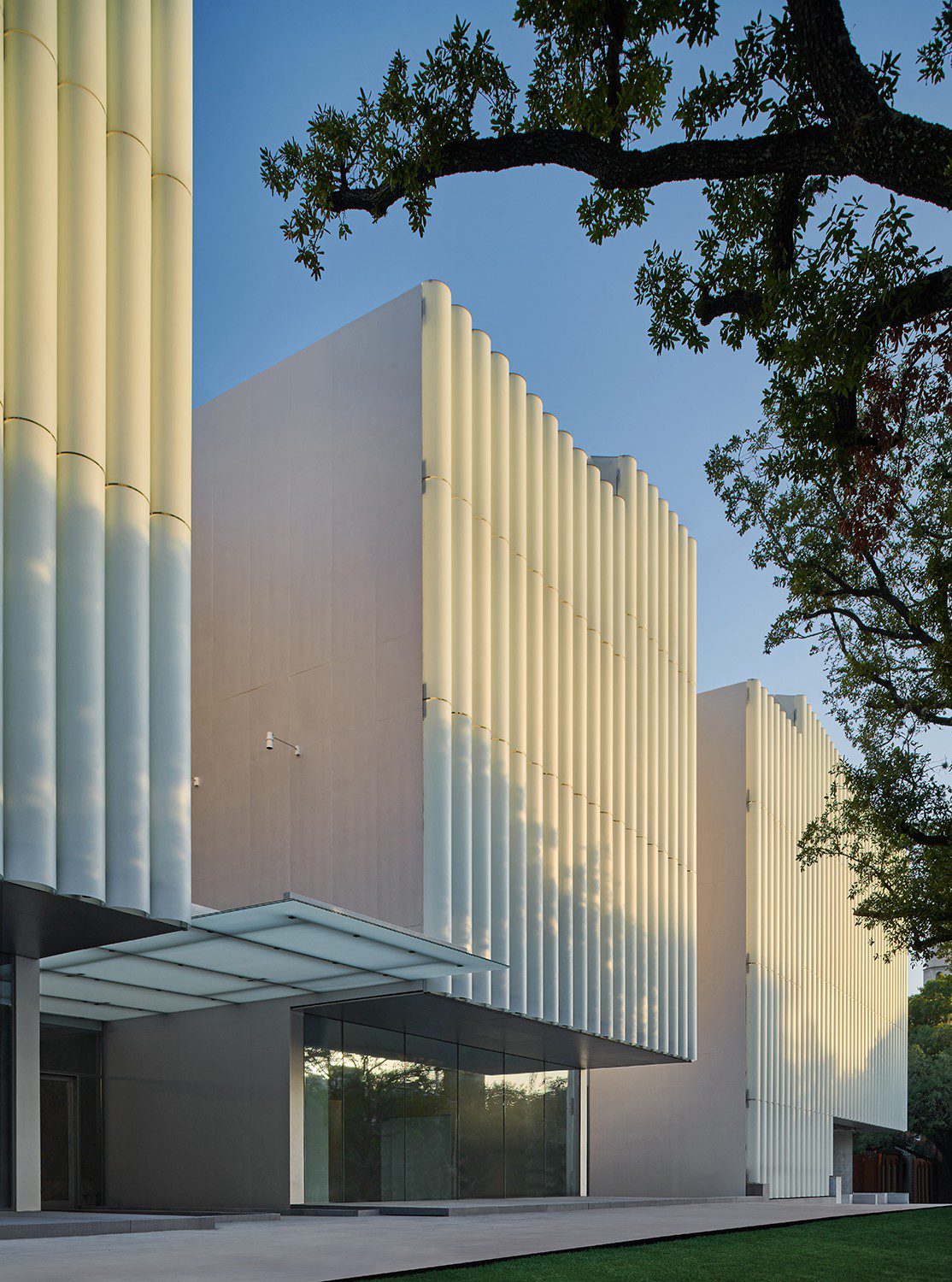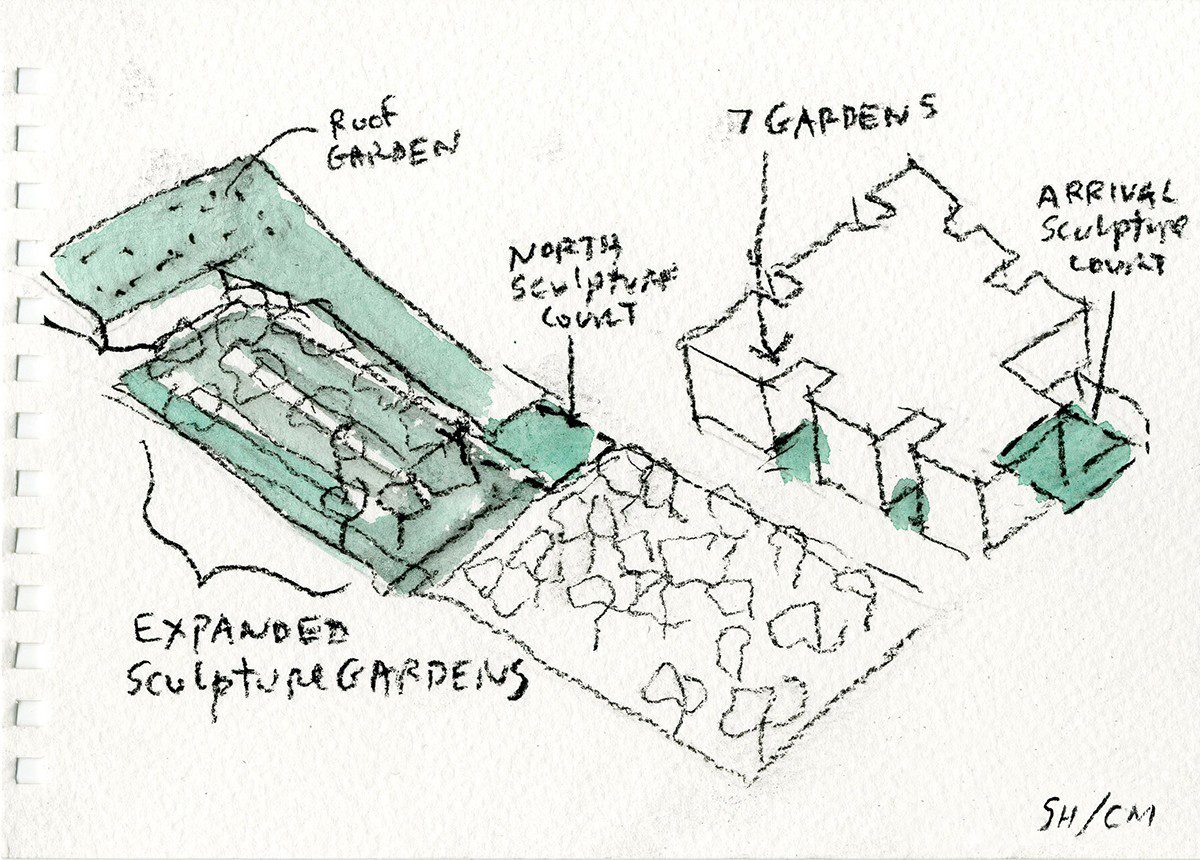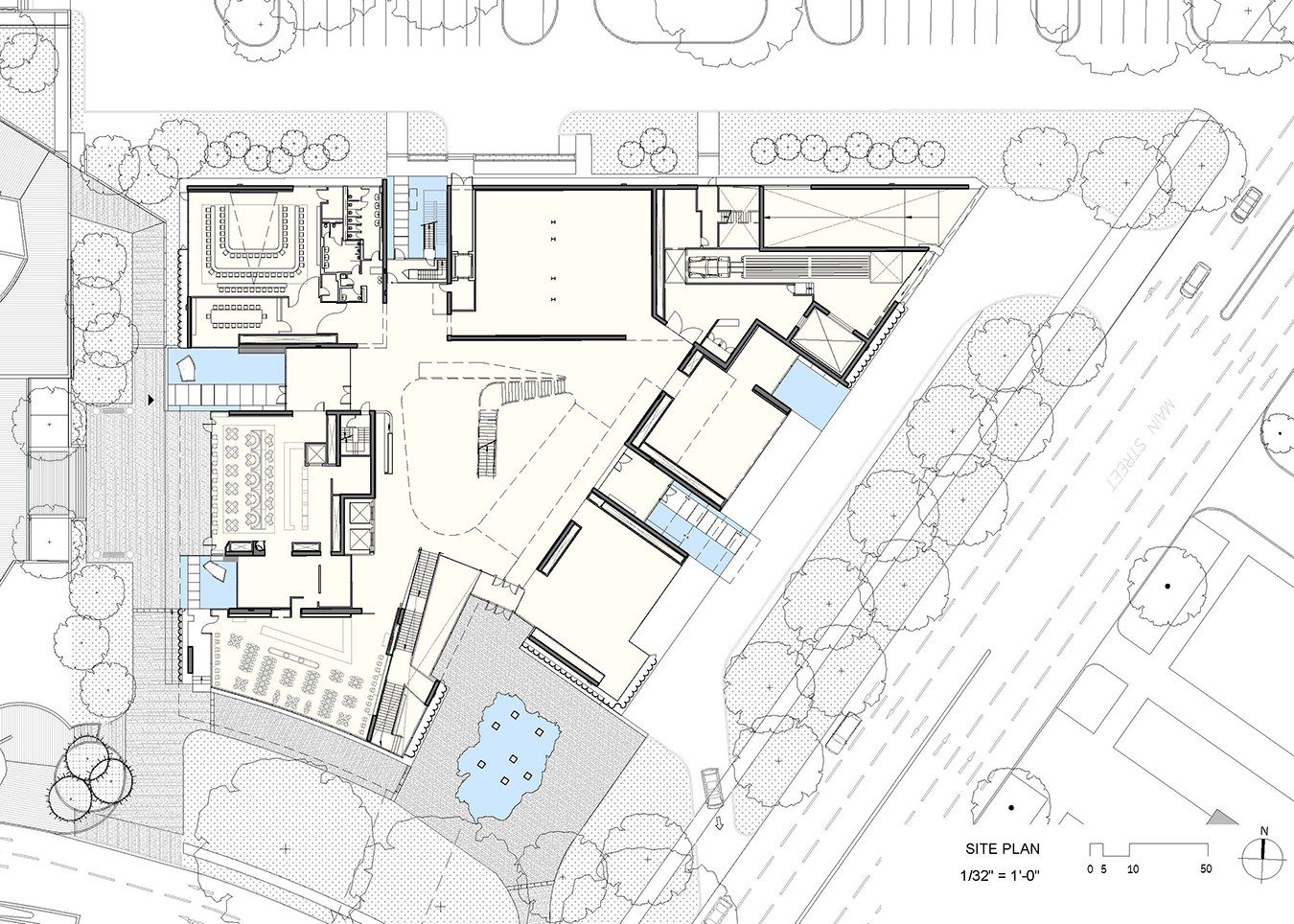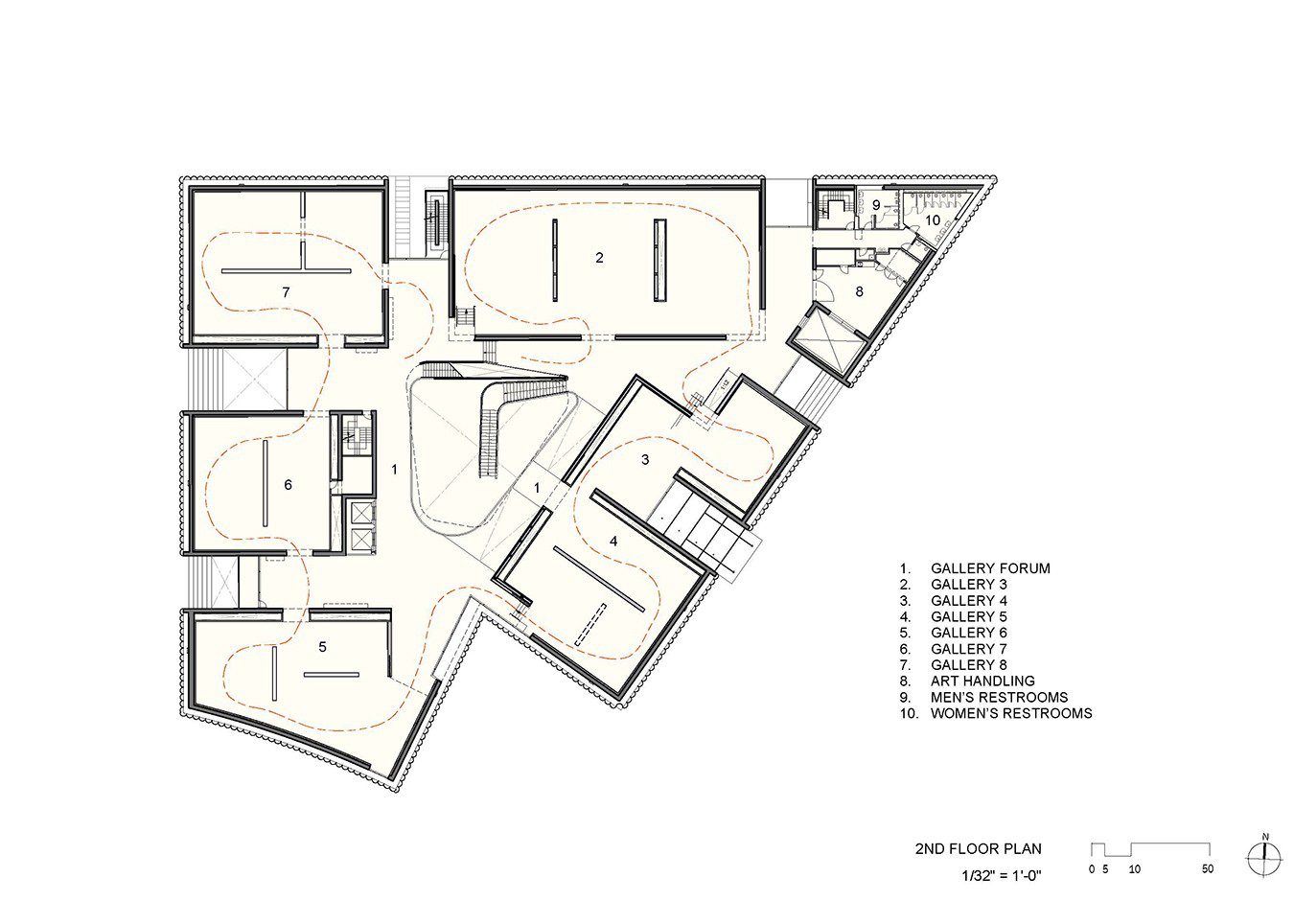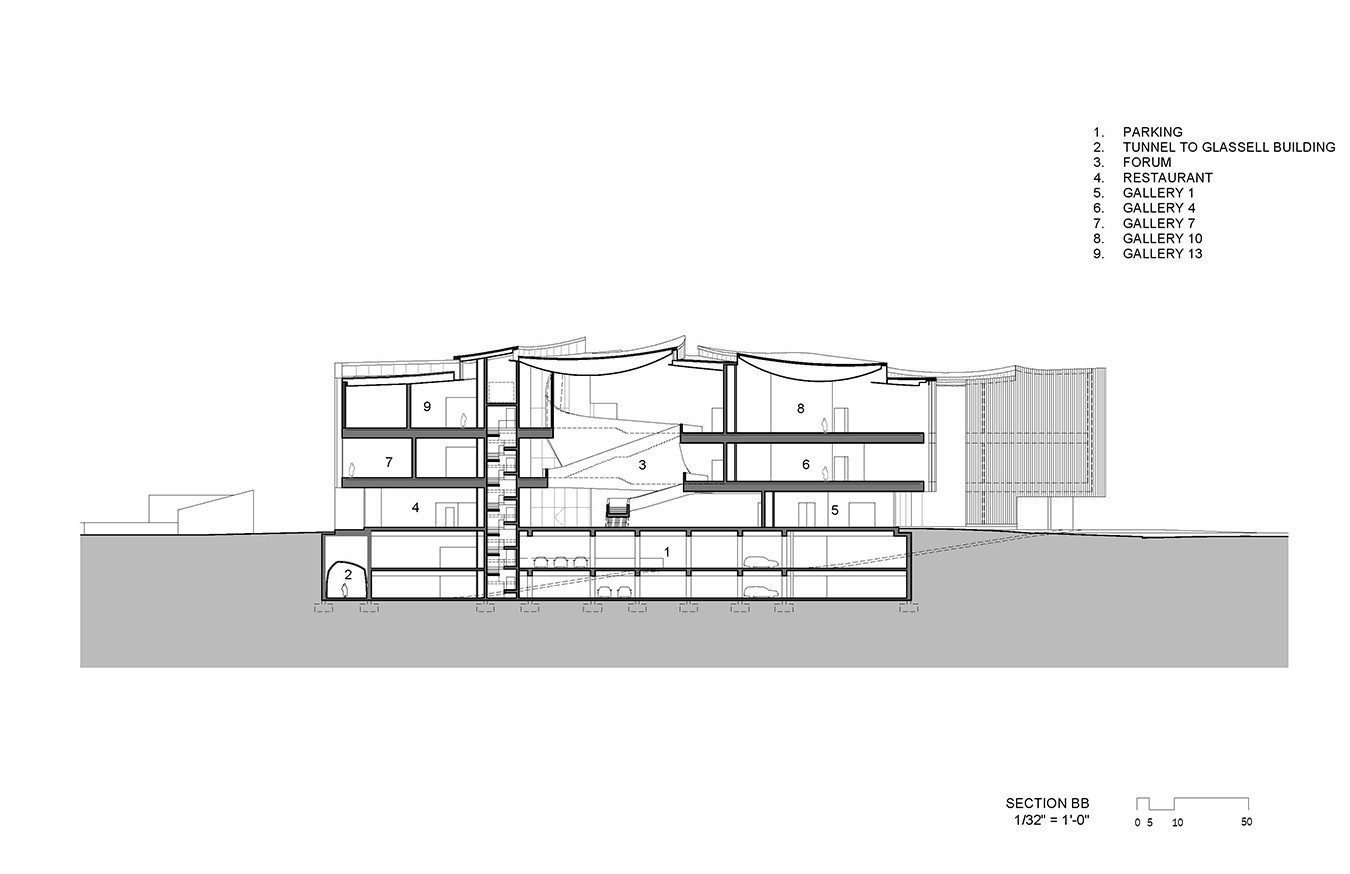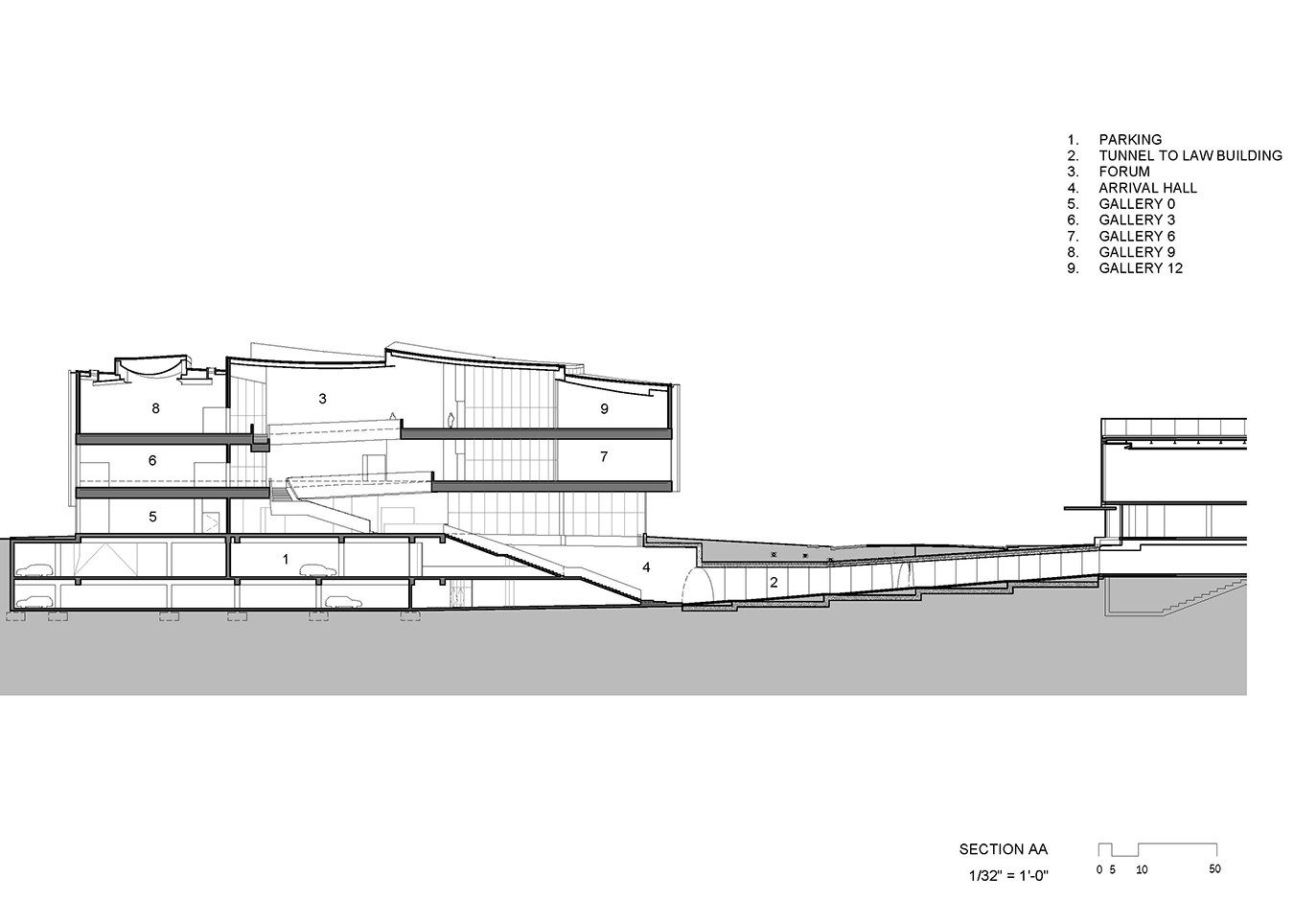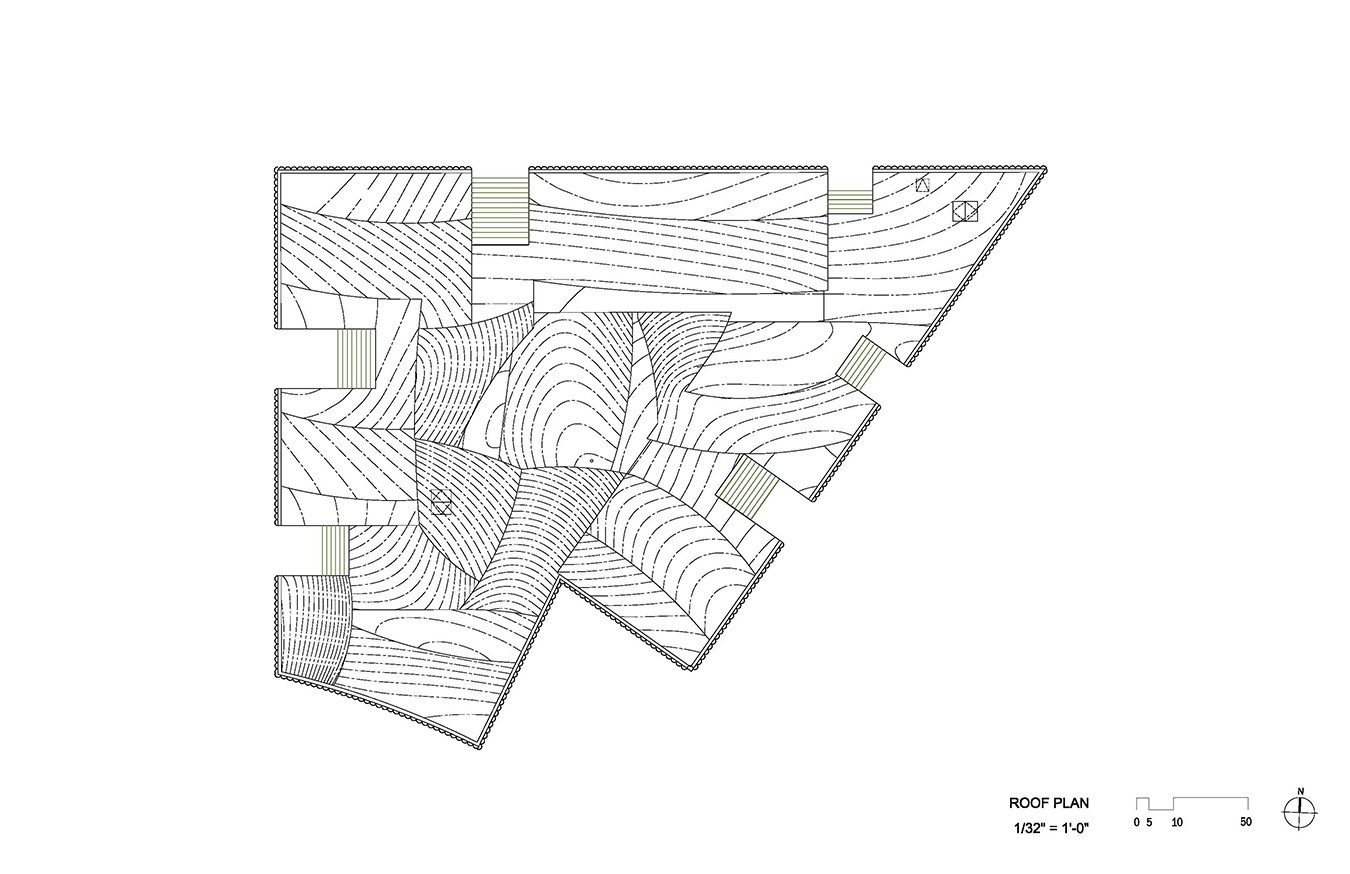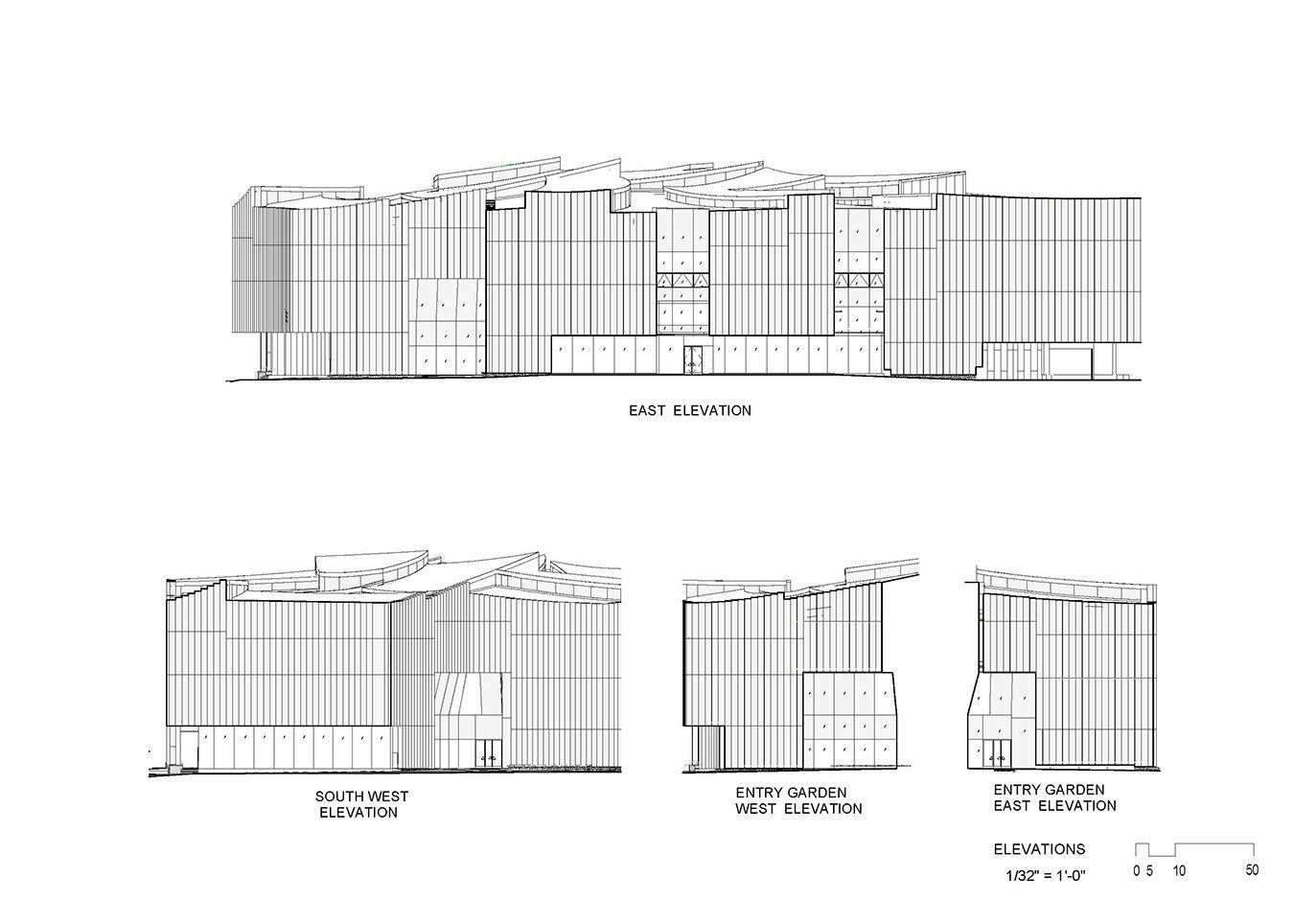The opening of the 237,000-sf Kinder Building completes the decade-long expansion and enhancement of the Museum’s Susan and Fayes S. Sarofim Campus. Led by Steven Holl Architects, the campus redevelopment is the largest new North American cultural project.
November 16, 2020 — Houston, Texas: The Museum of Fine Arts, Houston will open its Nancy and Rich Kinder Building to the public Saturday, November 21. Dedicated to the collections of modern and contemporary art, the Kinder Building is characterized by porosity, opening the ground floor at all elevations. Seven gardens slice the perimeter, marking points of entry and punctuating the elevations. The largest garden court, at the corner of Bissonnet and Main Street, marks a central entry point on the new Museum of Fine Arts, Houston campus. When standing in the new entrance lobby of the Kinder Building, one can see gardens and lush Houston vegetation in four directions and feel the inviting energy of a new sense of openness to the community.
The Texas sky opens 180°overhead above a luminous canopy covering the new building. Concave curves, imagined from cloud circles, push down on the roof geometry, allowing natural light to slip in with precise measure and quality, perfect for top-lit galleries. Organized horizontally on two levels, all galleries have natural light and are flexible with open flow. The undersides of the curved ceiling become light reflectors, catching and sliding the light across each distinct gallery experience. These curved slices of light shape the gallery spaces in a unique way related to the organic qualities of the lush vegetation and water that characterize the new campus. Rather than mechanical and repetitive, the light is flowing, echoing the movement through the galleries.
The open flow through galleries is punctuated by views into the seven gardens with green trellises offering shade from glare. The galleries are centered around an open forum. The central gallery atrium provides generous spaces for the exhibition of art and vertical circulation to the upper floors.
The 237,000-square-foot Kinder Building adds a horizontal architecture in translucent glass to the museum’s collection of stone (1924), steel and glass (1958, 1974), and stone (2000) buildings. Its innovative glass-tube facade has a soft, alabaster-like texture. The 30-inch tubes of glass open at the top and bottom, providing a “cold jacket” which reduces solar gain by 70% on the facades via the chimney effect of air circulation. At night, the glowing translucent facade is reflected in the water gardens and provides an open invitation to enter the museum.
The Kinder Building completes the master plan for the Museum of Fine Arts, Houston. Steven Holl Architects led the multidisciplinary team for the expansion, shaping an integral experience with new landscapes and public plazas. In the center of Houston, the new master plan knits together adjacent historic elements, including a 1924 historic church, a Mies van der Rohe building, and an Isamu Noguchi sculpture garden.
Glassell School of Art
As part of the master plan, Steven Holl Architects completed the new 93,000-square-foot Glassell School of Art in 2018. Set adjacent to the Kinder Building, the L-shaped School creates an integral campus experience, defining the Brown Foundation Plaza which extends the space of the Cullen Sculpture Garden by Noguchi. The precast planar structural concrete exterior begins with the angle of the inclined roof plane and gives character to the inner spaces of the building. The planes alternate with large translucent panels to provide diffuse light to the art studios within the building.
For further information, please visit www.stevenholl.com or contact Julia van den Hout, Original Copy, press@stevenholl.com, +1 (773) 203.2295
aerial night photograph by Thomas Kirk III
other photography by Richard Barnes
drawings courtesy of Steven Holl Architects
watercolors courtesy of Steven Holl
